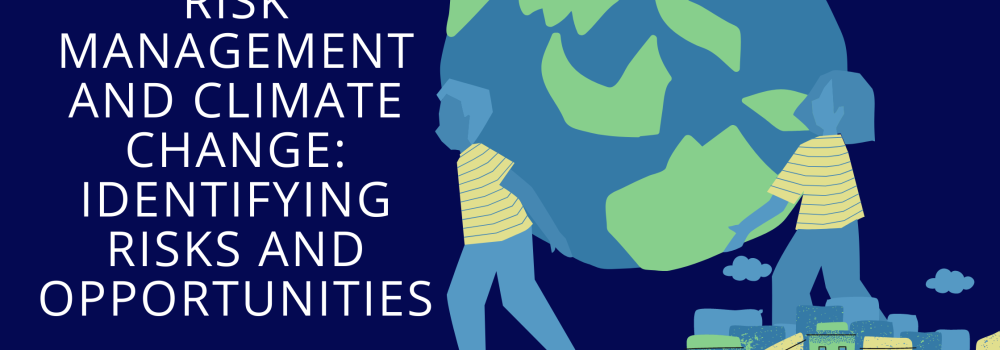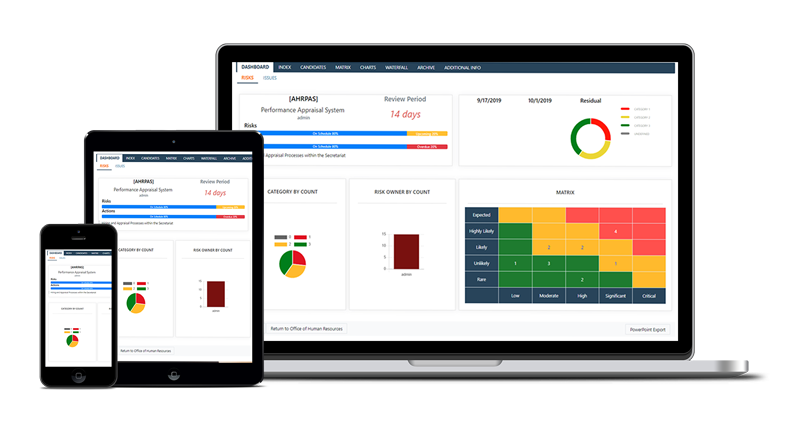One of the most significant risks that organizations face today relates to climate. Risks exist not only because of climate change’s physical effects, but also as a result of the transition to a lower-carbon economy recommended by COP26 to limit the potential rise in global temperatures.
Most economic sectors and industries are affected by climate-related risks and the planned transition to a lower-carbon economy. While climate change and the shift to a lower-carbon economy poses several risks, it also presents opportunities for organisations who are able to quickly adapt to the new environmental dynamics.
With these challenges in mind, it is evident that investors are more and more interested in learning the risks organisations face now and, in the future, and what they are doing to ease them. The Financial Stability Board formed an industry-led task force, the Task Force on Climate-related Financial Disclosures (TCFD), to help identify the information needed by investors, lenders, and insurance underwriters to adequately assess and price climate-related risks and opportunities.
So, what are the main risks and opportunities organisations should be considering?
The answer will depend on your organisation’s size, industry, governance practices and several other factors. To help with that assessment, the Task Force created categories to help with standardisation and facilitate assessment and management of these events.
Climate Change Related Risks
The Task Force has been publishing guidance reports with this goal since 2017 and they have identified 7 risk categories to be considered when assessing, managing and reporting your organisation’s climate related risks.
The seven risk categories are:
Policy and Legal Risks – This includes both policy actions that attempt to constrain activities that contribute to climate change and policy actions that seek to promote adaptation to climate change. Litigation risk is also projected to increase as the value of losses and damage caused by climate change rises. Examples of Policy and Legal risk types include:
- Increased reporting requirements for emissions
- Requirements and regulation for existing products and services
- Litigation exposure
Technology Risk – Organizations can be significantly impacted by technological advancements or inventions that promote the shift to a lower-carbon, energy-efficient economic system. This process when new technology displaces old systems and disturbs some aspects of the existing economic structure will impact some organisations more than others. Risk types to consider can be:
- Substituting existing products and services with lower emissions options
- A failure to invest in innovative technology
- Costs to transition to lower emissions technology
Market Risk – These are linked to shifts in supply and demand for certain commodities, products, and services as climate-related risks and opportunities are more widely recognised. There are several examples of Market Risk types but the most relevant are:
- Shifting customer behaviour
- Uncertainty in market signals
- Rising cost of raw material
Reputation Risk – Relates to changes in consumer or community views of an organization’s contribution to or detraction from the transition to a lower-carbon economy. An organisation’s reputation can be affected by:
- Increased stakeholder concern or negative stakeholder input
- Changes in consumer preferences
- Sector stigmatization
So far, we’ve only been discussing Transition Risks but there are, of course, Physical Risks to consider, such as:
Acute Risk – These are event-driven risks. While extreme weather events are difficult to foresee, businesses should have contingency plans in place in case of:
- Cyclones,
- Hurricanes, or
- Floods and other natural disasters
Chronic Risk – Chronic physical risks refer to longer-term shifts in climate patterns, for example:
- Changes in precipitation patterns and extreme variability in weather patterns
- Rising temperatures
- Rising sea levels
Climate Change Related Opportunities
On the other hand, initiatives to mitigate and adapt to climate change can create opportunities for businesses, such as resource efficiency, access to new markets, cost savings, the development of innovative products, services supply chain resilience, and the adoption of low-emission energy sources.
As outlined below, the Task Force found various areas of opportunity.
- Resource Efficiency – Over the medium to long run, organizations that have successfully improved efficiency across their production (specially in relation to energy efficiency) can benefit in direct cost savings for the organisation’s operations while also contributing to global efforts to reduce emissions.
- Energy Source – Renewable energy investments have surpassed fossil fuel generation investments in the past few years. The trend toward decentralised sustainable energy sources, rapidly declining costs, enhanced storage capacity, and global adoption of these technologies are all crucial.
- Innovation and Development of low-emission Products and Services – Organisations that lead this change can improve their competitive position and profit from changing consumer and producer preferences. This includes consumer goods and services that place greater emphasis on a product’s carbon footprint in its marketing and labelling and producer goods that place emphasis on reducing emissions.
- New Markets – Organizations that seek out new markets or asset types on a proactive basis may be able to diversify their operations and better position themselves for the transition to a lower-carbon economy. Collaboration with governments, development banks, small-scale local enterprises, and community groups can create opportunities for organizations to access new markets as they work to shift to a lower-carbon economy.
- Resilience – Relates to an organization’s ability to adapt to climate change in order to better manage the risks and opportunities that come with it, including the ability to respond to transition and physical risks. Improving efficiency, redesigning the industrial processes, and developing new products are all possibilities.
Each organisation is unique but it is evident that climate change is already causing disruption and it will affect everyone in the near future. Managing these risks and opportunities will help organisations to be better prepared for climate-related risks, wherever they might come from.
The TCFD reports, as well as other publications, can be found here.
Don’t know how to start implementing TCDF Recommended Disclosures? This article might help: 8 steps to start implementing TCDF Recommendations






